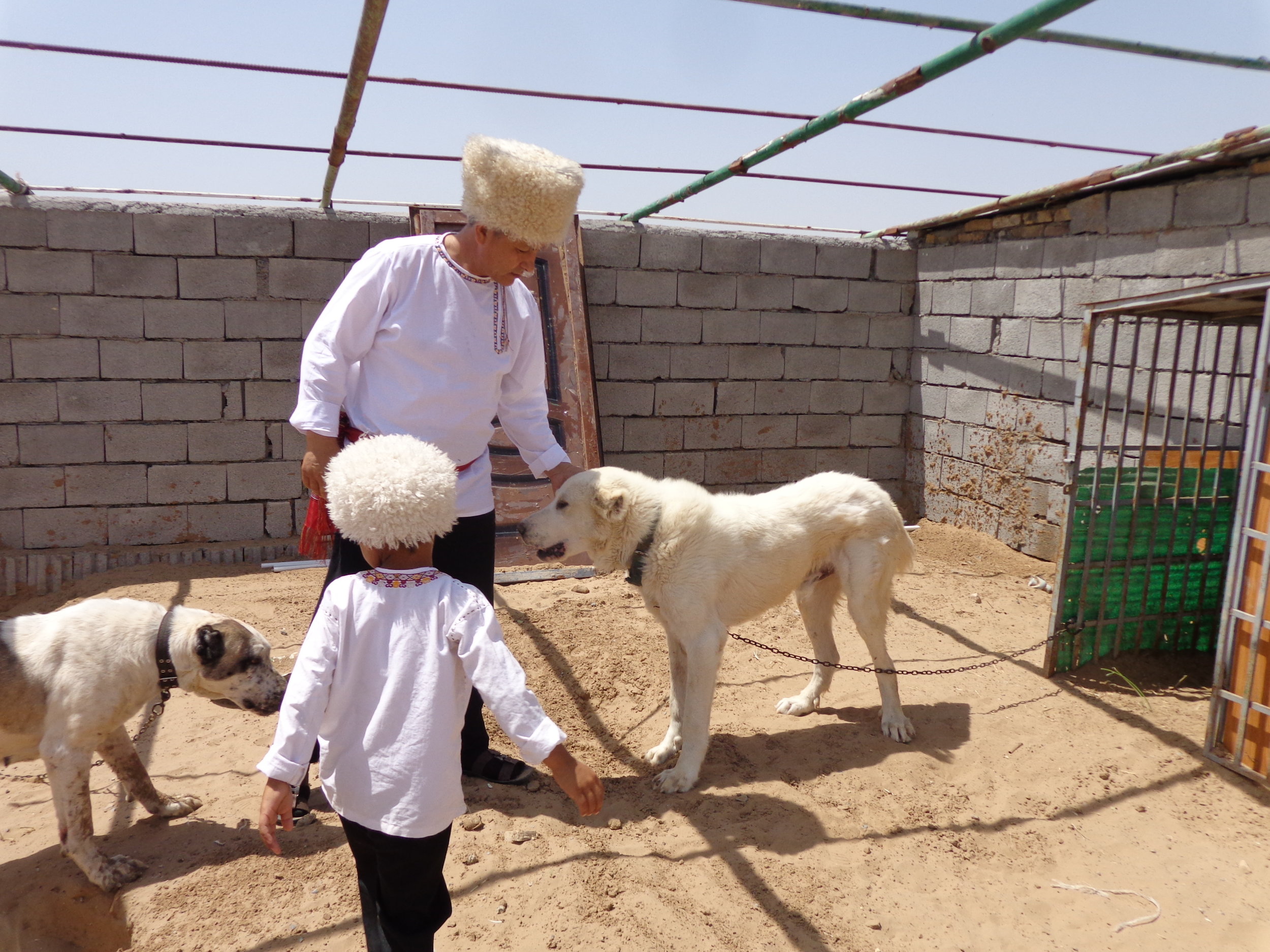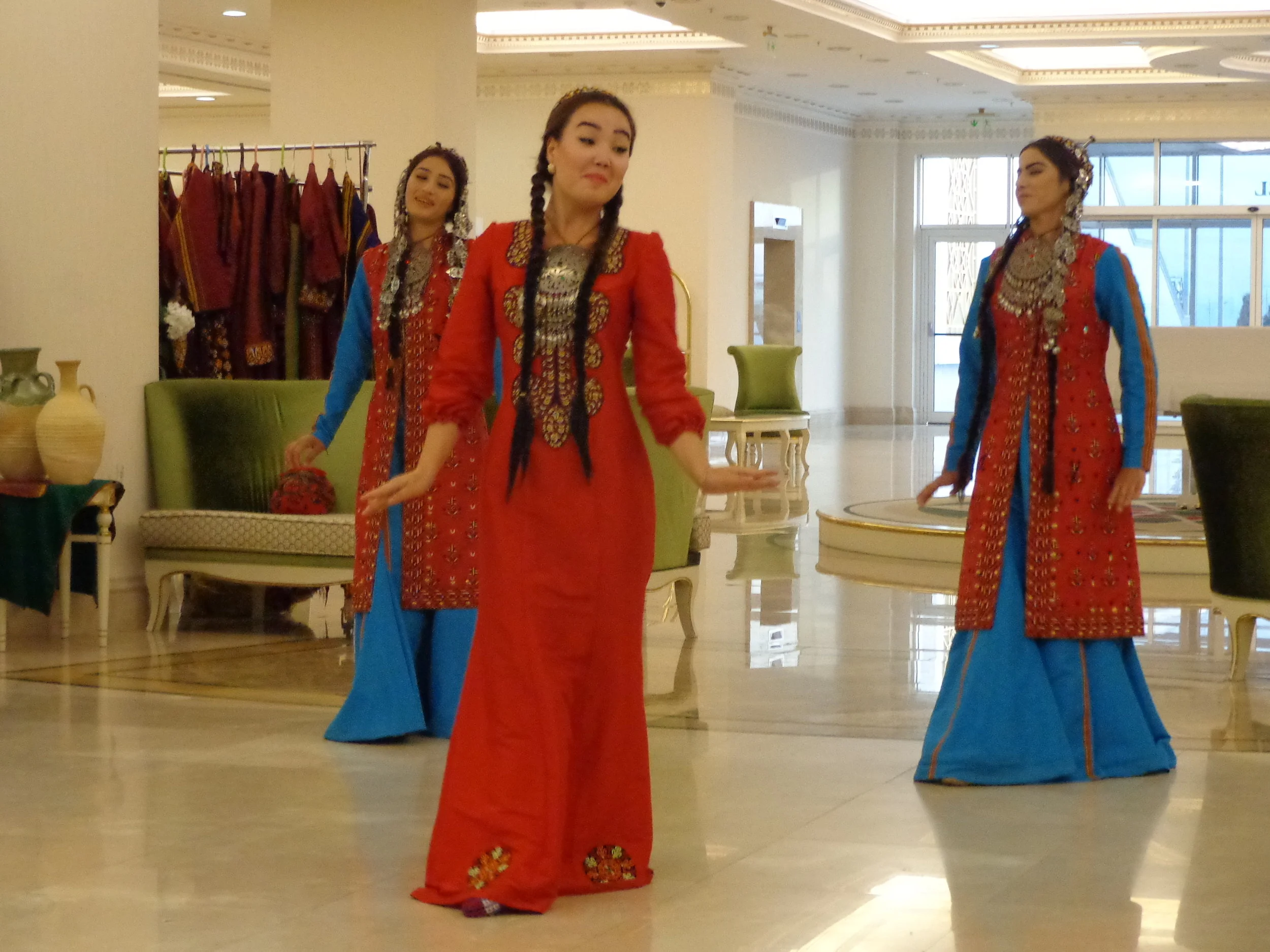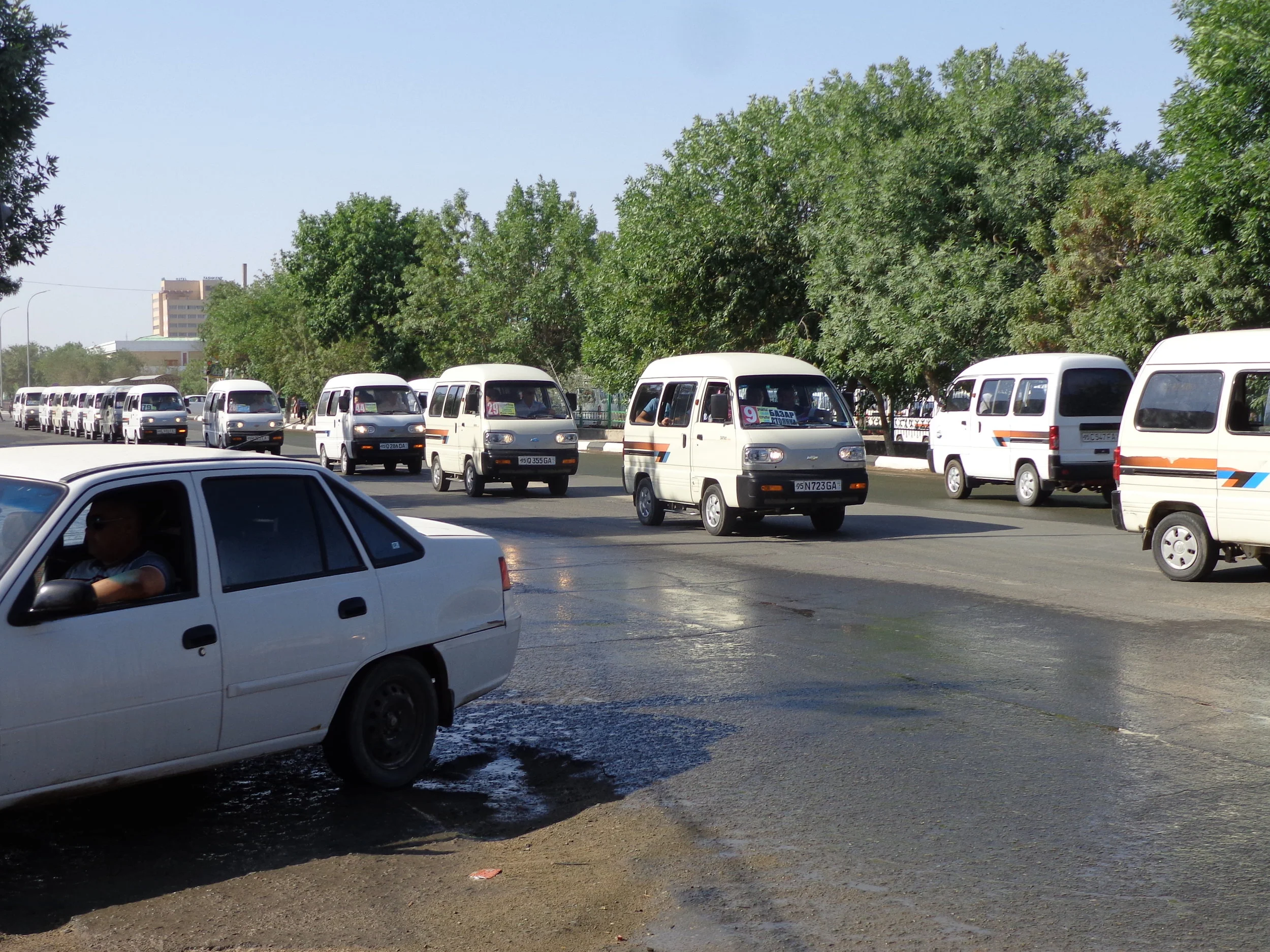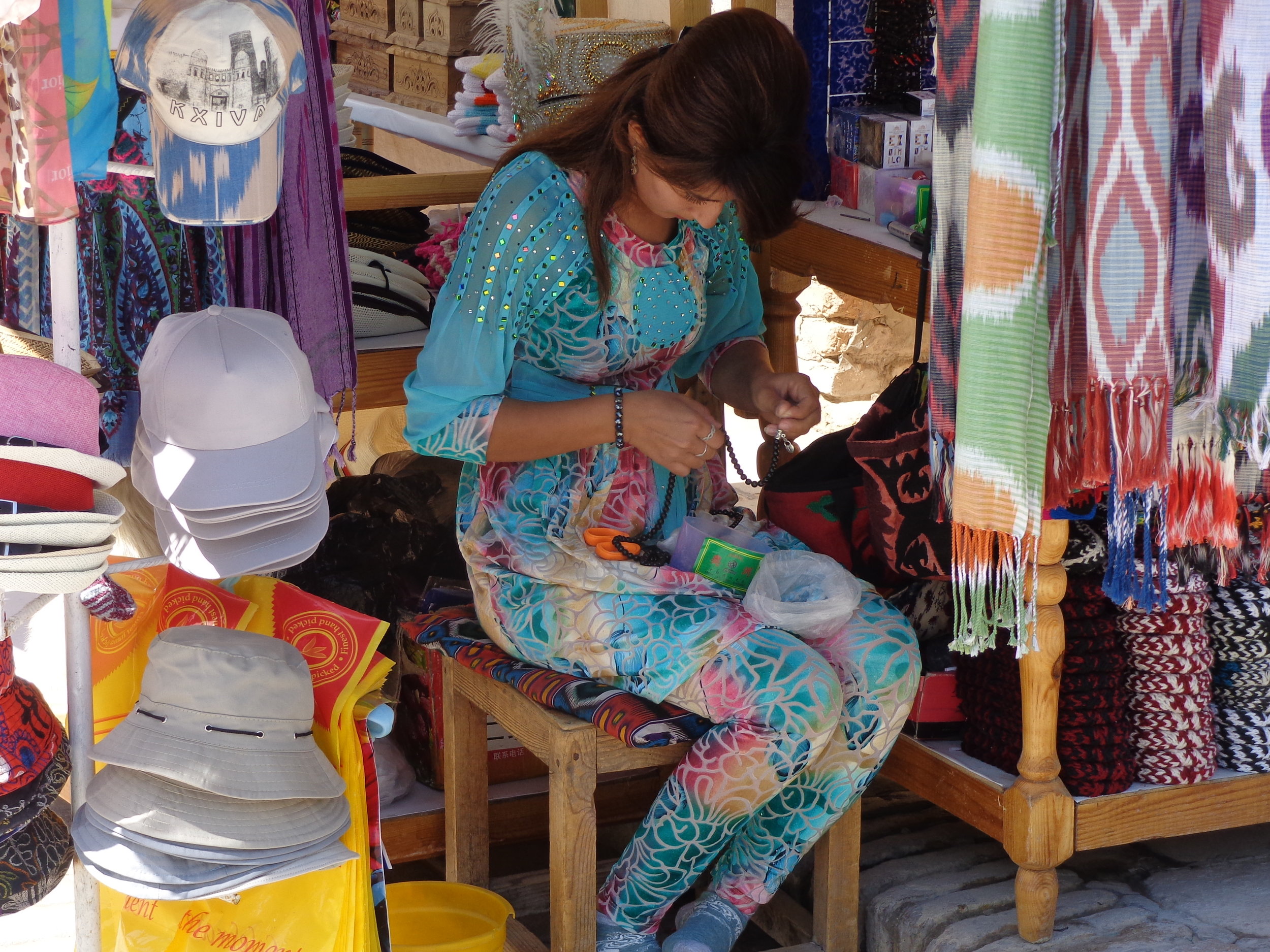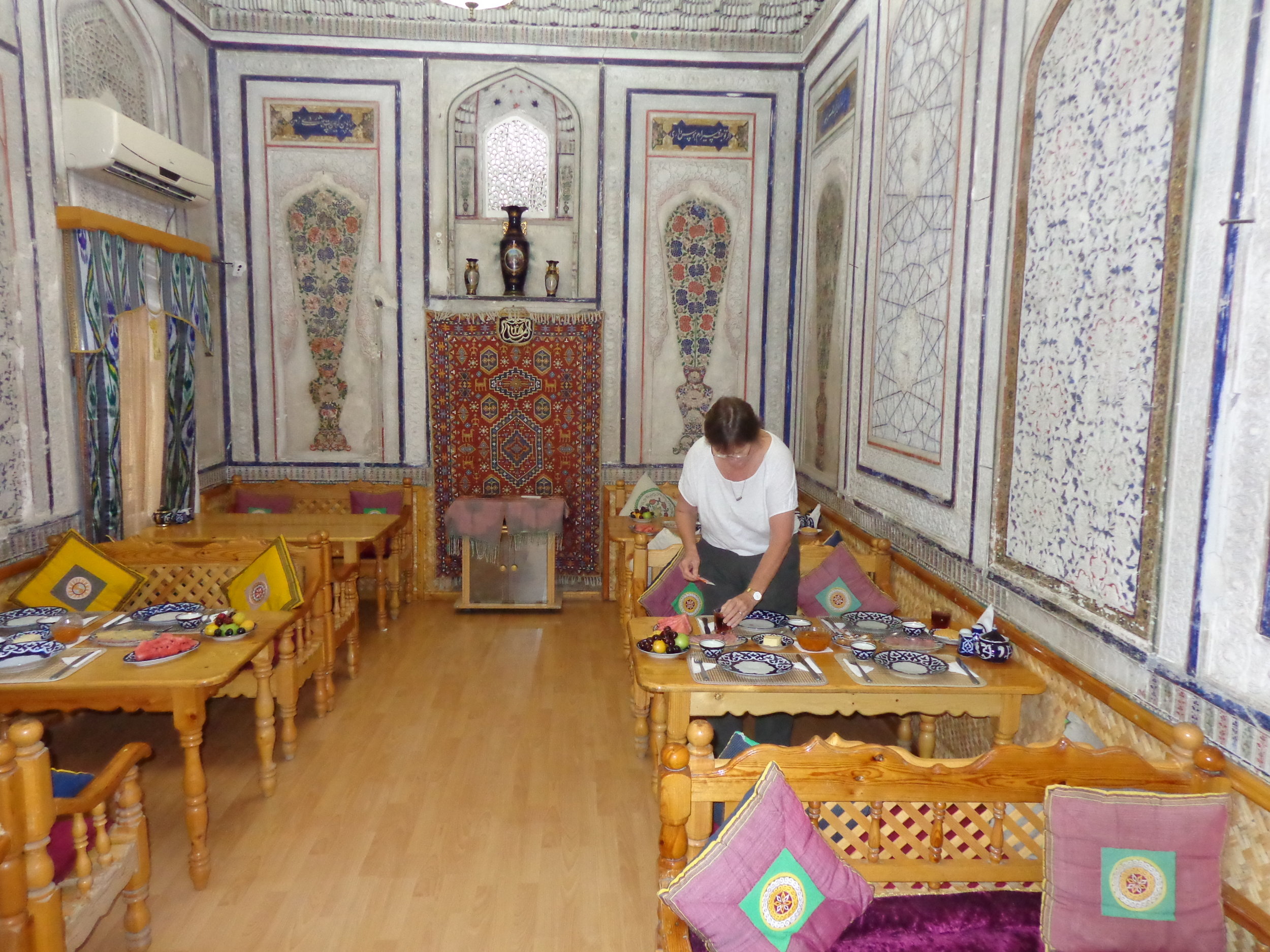Akhal-Teke Horse Farm
This is east of Ashgabat on a visit to an Akhal-Teke horse farm. The Akhal-Teke is a horse breed from Turkmenistan and the country’s national emblem. This horse breed goes back about 3,000 years with earliest mentions as far back as the fourth or third centuries B.C. Alexander the Great’s favorite horse was an Akhal-Teke. Akhal was the name of the line of oases along the north slope of the Kopet Dag mountains which were inhabited by the Tekke tribe of Turkomans.
The Akhal-Teke were developed by the fierce nomadic warriors of Central Asia and have a reputation for speed, endurance, agility, and a distinctive metallic sheen. They are adapted to severe climatic conditions. They are renowned as race horses with a reputation for great stamina and courage. Currently, Akhal-Teke horses in Turkmenistan are not allowed to leave Turkmenistan.
You can see a small part of their main corral in the first photo. This horse farm currently has 92 Akhal-Teke horses. The owner raises them for racing and for sale. You can see the Kara Kum Desert in the background.
We had a long “horse showing” during our visit. I don’t remember how many horses were brought out, but it was quite a few. Vicky enjoyed the horse showing as you can see in the second photo.
To say that some of the horses were spirited would be an understatement, such as the horse in the third photo. He evidently wasn’t interested in our horse showing.
I’m with the owner of the farm in the fourth photo. He seemed to love his farm and horses. He is a friend of Turkmenistan’s President and has a big photo of the two of them in their dining room.
They also raise Alabai dogs. The breed goes back thousands of years in central Asia and was a working dog in Turkmenistan who chased away the wolves. It’s highly valued for personality traits, resilience, and guarding abilities. I believe that they used to guard the nomads herds of sheep and goats against the wolves. You can see the owner and his son with a one-year old Alabai (on the right) in the last photo.





